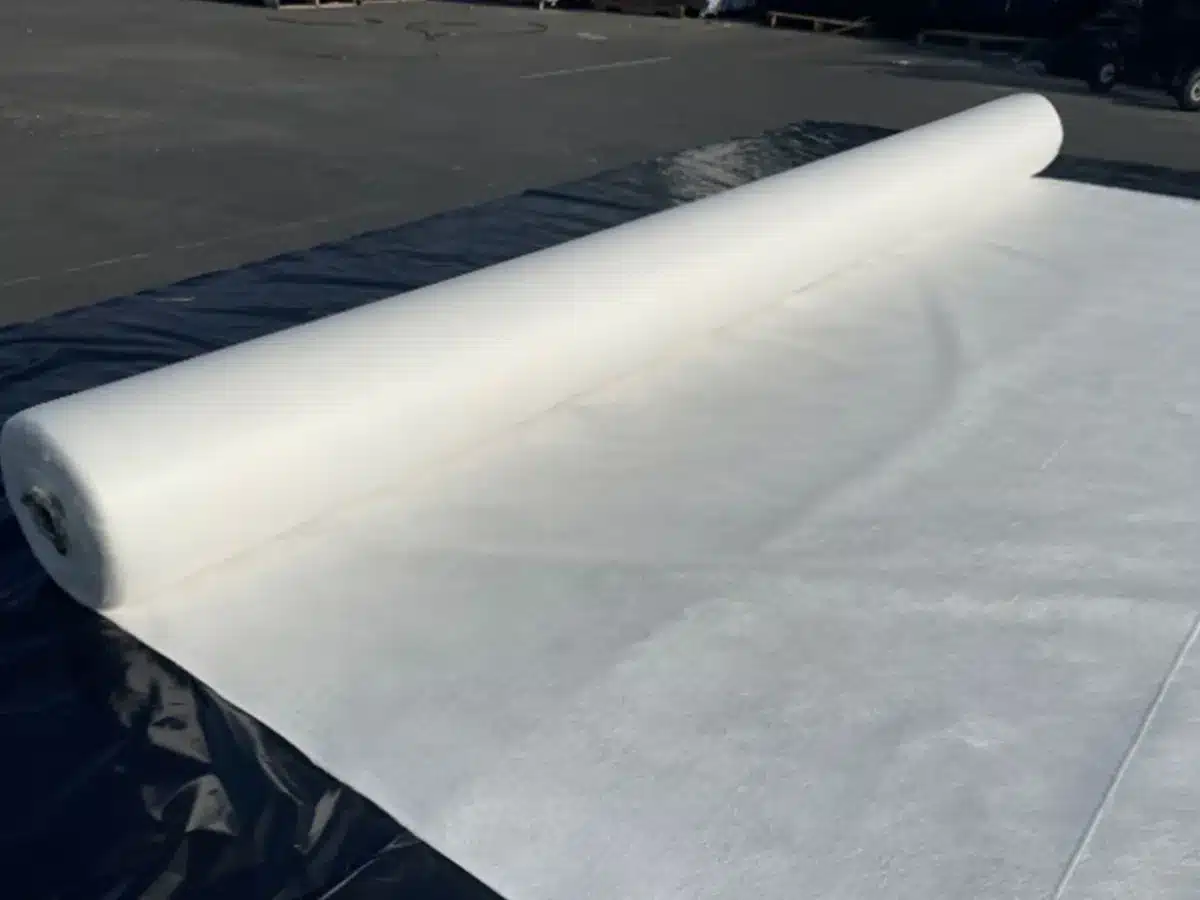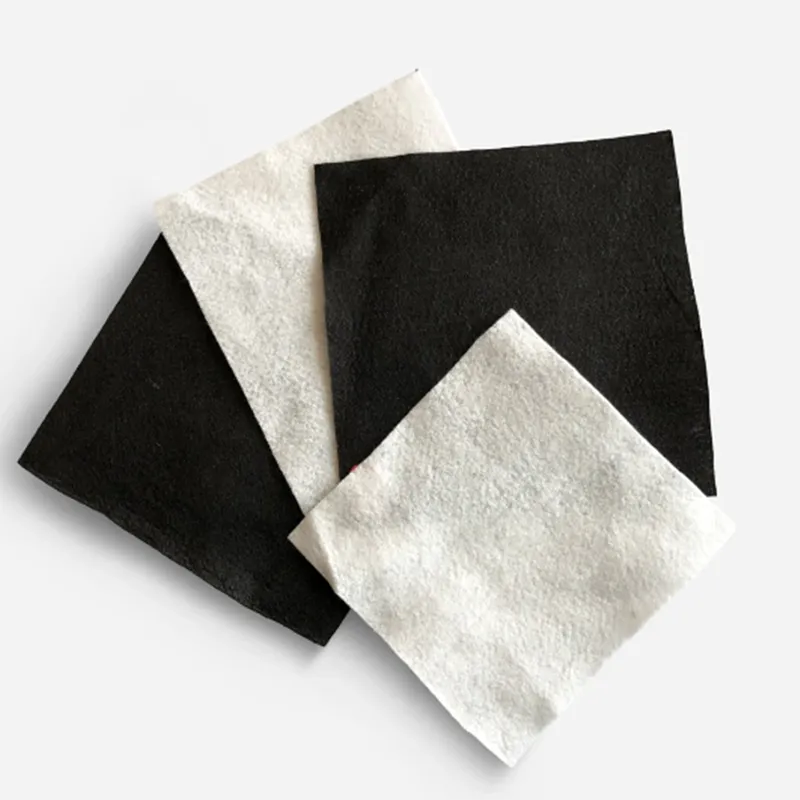+86-159 9860 6917
info@geofantex.com
geofantex@gmail.com
+86-400-8266163-44899
Selecting the right geotextile fabric for your grow bags is crucial for a successful gardening experience. In this article, we’ll explore the different aspects of geotextile fabric selection, answering key questions to help you make an informed decision.

What is Geotextile Fabric for Grow Bags?
Geotextile fabric for growing bags is a permeable material used primarily in agriculture and gardening for plant growth. This type of fabric is made from synthetic or natural fibers and is engineered to allow water, air, and nutrients to pass through while keeping soil and other materials contained. Here are some key characteristics and uses of geotextile fabric in grow bags:
- Breathability: The fabric’s permeable nature ensures that roots receive ample oxygen, which is crucial for healthy growth. It prevents waterlogging and root rot by allowing excess water to drain away effectively.
- Durability: Geotextile fabrics are typically durable and resistant to decay, making them suitable for repeated use over several growing seasons.
- Improved Root Health: The fabric promotes healthy root growth by providing a structure that encourages roots to grow outward rather than circling and becoming root-bound, as often happens in traditional pots.
- Versatility: These fabrics can be used to create grow bags of various sizes and shapes, adaptable to different types of plants and the spatial limitations of a garden or grow area.
- Environmentally Friendly Options: Many geotextile grow bags are made from recycled materials and are themselves recyclable, contributing to sustainable gardening practices.
- Ease of Use: Grow bags made from geotextile fabric are lightweight, making them easy to move around compared to traditional pots. They are also generally foldable and space-efficient for storage when not in use.
Grow bags made from geotextile fabric are popular among both commercial and hobby gardeners for these benefits, especially for growing vegetables, herbs, and smaller fruit plants.
How Do Geo Fabric Grow Bags Benefit Plant Growth?
Geo fabric grow bags offer several advantages to plants:
- Enhanced Aeration: The fabric allows for proper aeration, preventing root rot and enhancing root health.
- Improved Drainage: Excess water is drained away, preventing waterlogged soil and root rot, making them ideal for preventing overwatering.
- Temperature Regulation: Geotextile fabric helps regulate soil temperature, keeping it cooler in hot weather and warmer in cold weather.
- Weed Control: Geotextile fabric acts as a barrier against weeds, reducing the need for weeding.
- Root Protection: It protects the roots from temperature extremes and physical damage.
- Erosion Control: In outdoor applications, it prevents soil erosion and maintains the integrity of the grow bag.
- Easy Maintenance: Grow bags are lightweight, easy to move, and require less weeding and maintenance compared to traditional pots.
What Factors Should You Consider When Choosing Geotextile Fabric for Grow Bags?
When choosing geotextile fabric for grow bags, several factors should be taken into consideration to ensure the fabric meets your gardening needs effectively. Here are the key factors to consider:
- Permeability and Drainage: The fabric should allow for good air and water flow, enabling roots to breathe and preventing waterlogging. This helps promote healthy root growth and prevents root rot.
- Material Durability: The fabric should be strong and durable to withstand the wear and tear of gardening. It should resist degradation from sunlight (UV resistance) and be able to handle frequent watering and exposure to various weather conditions.
- Fabric Density and Thickness: The density of the fabric affects its strength and ability to retain soil. A thicker fabric might last longer and provide better support for the soil, but it could potentially restrict air and water flow if not designed correctly.
- Environmental Considerations: Consider eco-friendly options such as recycled materials or biodegradable fabrics. These choices can be better for the environment while still providing the necessary functionality.
- Size and Shape Adaptability: The fabric should be flexible enough to accommodate various shapes and sizes of grow bags. This versatility can be particularly useful if you have specific spatial requirements or aesthetic preferences.
- Ease of Use and Maintenance: Choose a fabric that is easy to handle, install, and maintain. It should be simple to clean, and if reusable, it should withstand multiple growing seasons without significant deterioration.
- Cost-Effectiveness: While quality is important, the fabric should also fit within your budget. Consider the cost per unit area and balance it with the expected lifespan and effectiveness of the fabric.
Selecting the right geotextile fabric for grow bags based on these factors can enhance your gardening experience by ensuring healthier plant growth and more efficient garden management.

Can I Reuse Geotextile Fabric for Multiple Growing Seasons?
Whether you can reuse geotextile fabric for multiple growing seasons depends on several factors:
- Fabric Quality: The longevity of geotextile fabric depends on its quality and thickness. Higher-quality, thicker fabrics are more durable and are more likely to withstand multiple seasons.
- Installation Method: Proper installation is key to the fabric’s effectiveness and durability. If the fabric is installed correctly and is not disturbed during the growing season, it’s more likely to be reusable.
- Type of Garden: The type of garden and its specific needs will also play a role. Geotextile fabric is commonly used in raised beds, under mulch in landscaping, or as ground cover in commercial agriculture. In some cases, it may be reused, while in others, it might need replacement.
- Wear and Tear: Over time, geotextile fabric can degrade due to exposure to the elements, UV radiation, and wear and tear. Check the fabric’s condition at the end of the growing season to assess if it’s suitable for reuse.
- Cleaning and Maintenance: You can extend the life of geotextile fabric by keeping it clean and free from debris and weed growth. Regular maintenance can help ensure its reusability.
- Specific Crop Requirements: Some crops may require different planting depths or spacing in subsequent seasons, which could necessitate the removal and replacement of the fabric.
In conclusion, the best geotextile fabric for growing bags depends on your specific gardening goals and the local climate conditions. Understanding the material, durability, water permeability, size, and thickness is essential to make an informed decision. By choosing the right geotextile fabric, you can create an optimal growing environment for your plants and enjoy a thriving garden.



Get Free Sample
We’ll respond as soon as possible(within 12 hours)





















